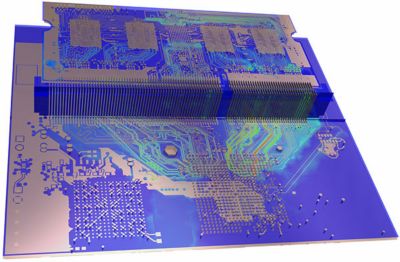-
-
학생용 무료 소프트웨어에 액세스하기
차세대 엔지니어에게 힘을 실어주는 Ansys
학생들은 세계적 수준의 시뮬레이션 소프트웨어를 무료로 이용할 수 있습니다.
-
지금 바로 Ansys에 연결하십시오!
미래를 설계하기
시뮬레이션이 다음 혁신을 어떻게 지원할 수 있는지 알아보려면 Ansys와 연결하십시오.
국가
무료 트라이얼
제품 및 서비스
학습하기
회사 정보
Back
제품 및 서비스
ANSYS BLOG
February 4, 2021
Connect Products and People with Simulation
For many years we have taken for granted the constant improvement in capabilities, performance and connectivity of the electronic devices that are now ubiquitous — from the next-generation wearable, cell phone or computer to smart home devices and virtual assistants that know what we want before we do.
The pandemic has brought our reliance on such technology into sharper focus — both at a personal and professional level — making us thankful for the experiences made possible by connected technology, whether a virtual business meeting or a video call with a loved one.
Behind the scenes, our reliance on technology that keeps us connected requires engineers to relentlessly innovate at an ever-accelerating pace and at scales that encompass the silicon in chips to the satellite systems orbiting the planet. With these innovations come exponential levels of complexity. To put this in context, while the exact number varies, Statista estimates there are around 25 billion connected devices on the planet today (more than three devices for every person on the planet) and that number is expected to at least double this decade. The latest chips contain tens of billions of transistors with a spacing measured in single nanometer digits.
Check out the Ansys high-tech webinar series, which showcases the past, present and future of mobile networking.
The sheer size and scale of device complexity is beyond human contextualization, visualization and intuition, which poses significant challenges for those companies and engineers in the high-tech industry. How do you tackle this complexity to deliver next generation capabilities? How do you deliver it faster than ever before? How do you ensure that the product is as reliable as the market demands it to be? And how do you meet and exceed your sustainability commitments — whether through the materials chosen or the power and energy required?
These high-tech electronics product challenges — innovation, speed, reliability and sustainability — can only be solved by augmenting human ingenuity with the power of simulation. To give some quantification to the impact of simulation, it can be expected that:
- At the innovation stage, ideation scenarios can be increased by 40% or more.
- Product development times can be driven down by 20% to 30%.
- Total costs per unit can be lowered by more than 10%.
Simulation also helps engineers explore new material solutions and minimize energy requirements at all scales of operation without compromising performance or reliability. Simulation increases an organization’s confidence that their products will perform as expected in the market.
Electromagnetic simulation of a printed circuit board design that incorporates eight two-layer flip-chip BGA packages mounted on a SODIMM board, which is plugged into a connector that is mounted on a motherboard.
Three Critical Capabilities of Simulation Software
Achieving these outcomes requires simulation tools with critical capabilities. Let’s consider three of these.
1. Accuracy. When working with complex modern electronics, there is no room for error. Close is not good enough. Using Ansys tools, NVIDIA was able to optimize high-speed serial links for cross talk and push the physical design to the limit while minimizing associated risks.
2. Multiphysics. The complexity of modern electronics systems can only be addressed by considering integrated electromagnetics and photonics, thermal and mechanical effects. Simulation tools must deliver this capability. Qualcomm helped design cool smartphones by using Ansys tools in the creation of a dynamic power management strategy to selectively direct power where it is needed and keep temperatures down. By keeping smartphones cooler, simulation will extend their working lifetimes, even as more features and multitasking capabilities are added. In addition, Ansys offers a specific toolset for physics of failure analysis that provides fast and accurate life predictions for electronics hardware.
3. Interoperability. Communication systems such as 5G demand simulation tools that can interoperate across scales from the silicon to the satellite. With the recent acquisition of AGI, Ansys is now uniquely positioned to deliver this simulation-based capability. You can learn more about our comprehensive solution to the challenges of 5G communications by reading our ebook.
Simulated beamforming, surface currents and electromagnetic fields of a 5G phased array antenna including radome. The array consists of a four 8x8 subarray, where the beam of each panel is steered individually and simultaneously.
So in your next virtual meeting, whether for business or pleasure, let’s all take a moment to thank the engineers behind the scenes that are using simulation to rapidly deliver the innovation and reliability we all need to stay connected in these difficult times.
For more information, check out the Ansys high tech webinar series.


